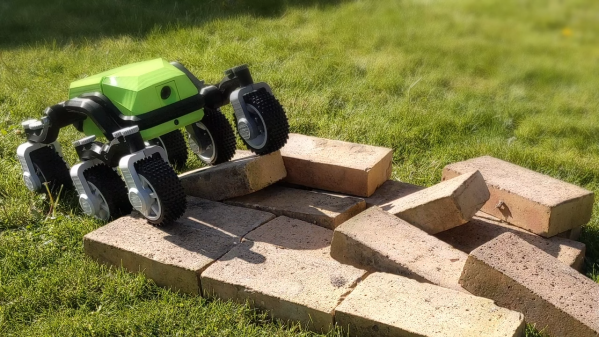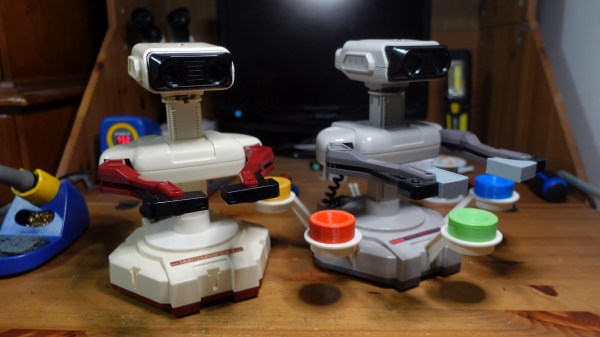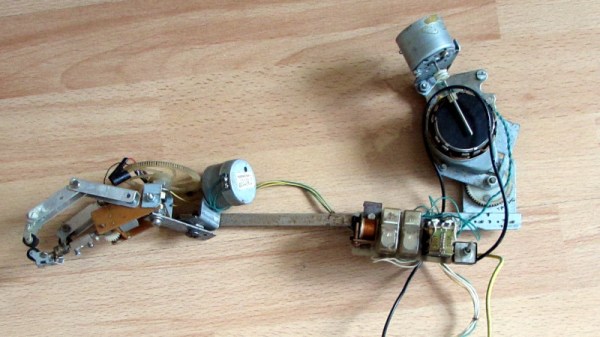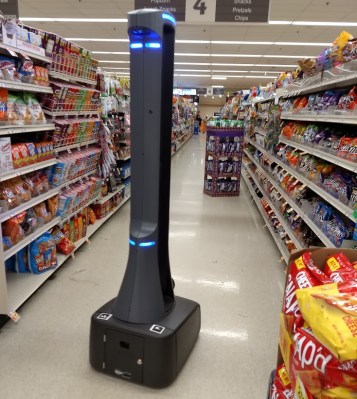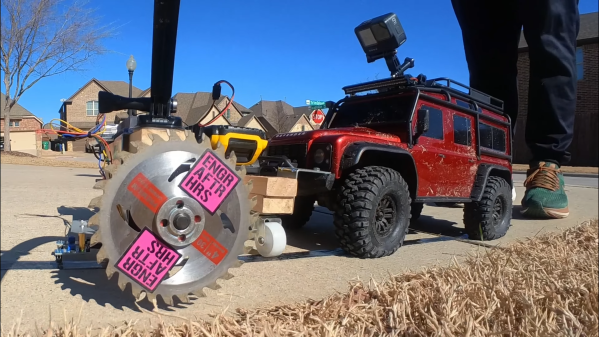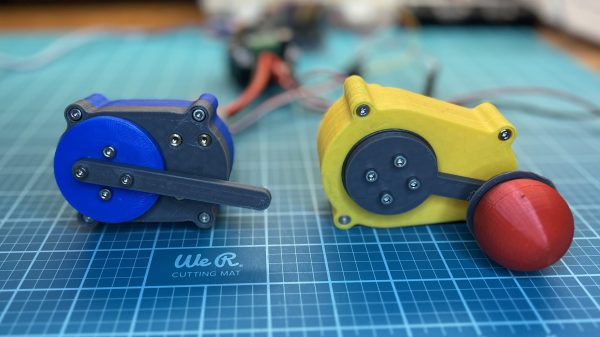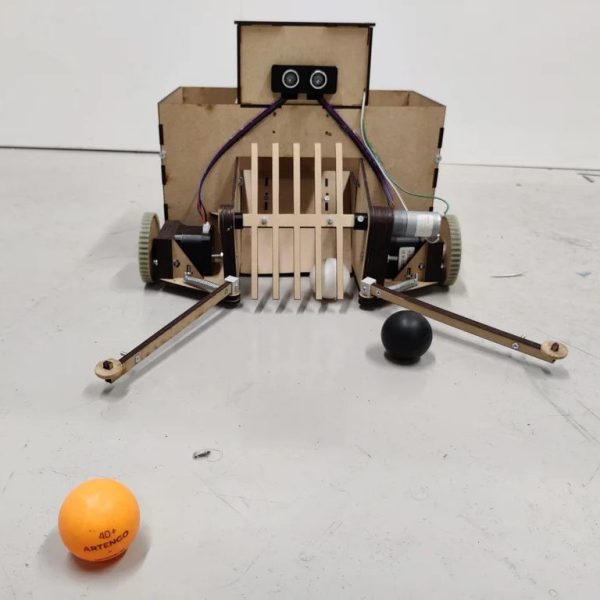Doctor Who eventually made light of the fact that the Daleks were critically impaired when it came to staircases. This rover from [WildWillyRobots] doesn’t share that issue, thanks to a smart suspension design.
The rover itself is built using 3D printed components for everything from the enclosure, to the suspension system, as well as the wheels themselves. It uses a rocker-bogie design, which NASA designed for Mars-bound rovers and we often see copied for terrestrial applications. Gear motors are used for their plentiful torque, and they are placed directly within the wheels. Servos allow the individual wheels to be steered, allowing the rover to crab sideways and perform zero-radius turns.
The rocker-bogie setup does a great job of keeping the rover’s wheels touching the ground, even over rough terrain. It readily tackles a random pile of bricks with ease, in a way that many four-wheeled designs would struggle to match. Given its trials on Mars, it’s easy to call the rocker-bogie setup a thoroughly-proven design.
We’ve featured plenty of other rocker-bogie builds in the past; many of them are 3D printed as well.
Continue reading “Stair Climbing Rover Gets Up With Rocker Bogies”

